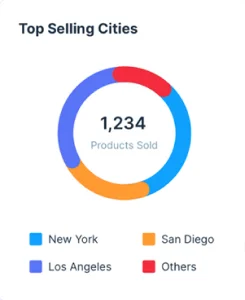Tracking Learning Progress Without Overwhelming Teachers
Student progress tracking is essential for improving outcomes. Yet, many educators feel overwhelmed by the task. How can teachers keep track of all this data without sacrificing their time and energy?
This article will help you to:
- Learn about tools that help track student progress easily.
- Discover adaptive learning methods that fit individual needs.
- Find solutions to reduce stress in assessment processes.
- Explore how technology streamlines tracking for educators.
- Get tips on improving communication with students and parents.
Understanding these methods can enhance not just student achievement, but also teacher effectiveness. Let’s dive into practical ways to make tracking smoother and more efficient.
Challenges in Tracking Student Learning Progress

Student progress tracking is crucial but not without its challenges. Educators face various hurdles that can complicate the process, making it feel like a daunting task. Let’s explore some of the key issues that can impede effective student progress tracking.
Time Constraints
Time is a precious commodity for teachers. With limited hours in a school day, tracking each student’s learning can often fall to the wayside.
Many teachers juggle lesson planning, grading, and classroom management, which can leave little time for robust progress tracking. Imagine trying to fit a puzzle together while missing essential pieces; that’s what tracking student progress looks like without adequate time.
The impact of time constraints includes:
- Limited Data Collection: Teachers may not have the opportunity to gather comprehensive data on student performance.
- Inaccurate Assessments: Without enough time for reflection, teachers may rely on quick assessments that don’t accurately gauge student understanding.
- Inconsistent Monitoring: Regular check-ins can become irregular, making it hard to identify patterns in student learning.
Recognizing these time constraints can help schools develop strategies to facilitate better tracking methods without overwhelming teachers.
Managing Large Amounts of Data
In the age of information, managing extensive student data can be both a blessing and a curse. While digital platforms have made data collection easier, the sheer volume of information can be overwhelming. For teachers, this translates to significant challenges:
- Data Overload: Having access to excessive data without a clear framework can lead to decision paralysis.
- Analysis Difficulty: Identifying trends and insights in large datasets may feel like finding a needle in a haystack without proper tools or training.
- Integration Issues: Merging various data sources can complicate the tracking process, leading to misinterpretations.
Focusing on streamlined data management strategies can ease these complications. This includes utilizing effective analytical tools and cutting down on unnecessary data points, allowing educators to focus on what matters.
Teacher Workload
Tracking student progress adds another layer to teachers’ already full workloads. Most educators are expected to do more than just teach; they are often tasked with administrative duties, communication with parents, and extracurricular activities. This multitasking can lead to burnout.
Consider these factors:
- Increased Responsibilities: As teachers take on more tasks, the focus on individual student progress might diminish.
- Stress and Fatigue: A heavier workload can lead to increased stress levels, making it harder to focus on quality tracking.
- Potential for Burnout: Long-term pressure and lack of support can lead to teacher burnout, ultimately affecting student performance.
Finding a balance is essential. Schools can support teachers by offering additional resources, technology support, and time dedicated strictly for tracking student progress. By streamlining processes, educators can achieve better outcomes without adding to their burden.
Addressing these challenges is vital for creating a supportive environment where teachers can effectively track student progress without feeling overwhelmed.
Effective Methods for Student Progress Tracking

Tracking student progress effectively involves multiple strategies that can give educators insight into how well students are learning without adding to their workload. Let’s explore some proven methods that simplify the process and ensure accurate assessments of student understanding.
Formative Assessments
Formative assessments play a crucial role in tracking learning by allowing teachers to gather information during the learning process. Think of them as checkpoints along the educational journey, helping educators adjust their approach based on student needs. These informal assessments can include:
- Quizzes: Short quizzes at the end of a lesson can provide instant feedback on student grasp of material.
- Polls and Surveys: Quick polls can gauge student attitudes and understanding, offering real-time data.
- Observations: Watching students during group work or discussions reveals insights into their collaborative skills and subject comprehension.
Using formative assessments regularly not only helps teachers identify areas that need more attention but also fosters a growth mindset among students. They feel more in control of their learning when they understand how they’re progressing.
Summative Assessments
While formative assessments check on learning along the way, summative assessments evaluate what students have learned at the end of an instructional unit. These formal assessments often take the shape of exams, projects, or presentations. Their role in tracking student learning outcomes is significant because they:
- Measure Proficiency: They provide a comprehensive view of whether students meet specific learning benchmarks.
- Offer Accountability: Summative assessments hold both students and educators accountable for achieving learning goals.
- Inform Future Teaching: The results can guide future lesson planning, ensuring that content is appropriately challenging and relevant.
By integrating summative assessments, educators can better understand the overall effectiveness of their teaching strategies.
Portfolio Assessments
One of the most comprehensive methods for tracking student progress is the use of portfolios. Portfolios allow students to collect and reflect on their work over time, providing a rich tapestry of their accomplishments. A well-structured portfolio includes:
- Diverse Work Samples: Writing assignments, projects, and presentations showcase a range of skills.
- Self-Reflections: Students assess their own learning, which encourages critical thinking and personal growth.
- Progress Over Time: Documenting changes in work quality highlights growth and areas for improvement.
Portfolios serve not just as a tool for assessment, but also as a great way for students to take ownership of their learning journey. They give educators a holistic view of student development, enhancing the effectiveness of student progress tracking.
Leveraging Technology for Efficient Tracking

Tracking student progress shouldn’t feel like a daunting task for educators. There are several technological tools available today that streamline this process, enabling teachers to manage data effectively without increasing their workload.
By utilizing Learning Management Systems, Adaptive Learning Technologies, and Data Analytics Tools, educators can track progress efficiently and maintain a focus on student learning.
Learning Management Systems (LMS)
Learning Management Systems (LMS) can be a teacher’s best friend when it comes to tracking learning and data management. LMS platforms allow educators to create a centralized hub for all learning activities. They streamline the process in multiple ways:
- Centralized Data Storage: All student data, assignments, and assessments are stored in one place, making it easy for teachers to access and manage.
- Automated Progress Tracking: An LMS automatically updates student progress based on completed assignments, quizzes, and participation, reducing the manual work involved.
- Customizable Reports: With an LMS, teachers can generate customized reports to analyze student performance and identify trends over time.
Consider an LMS as a digital classroom management system that takes over the heavy lifting of tracking student engagement and performance. This technology allows educators to focus more on teaching rather than getting lost in a sea of data. For more on creating a culture of continuous learning, take a look at this continuous learning guide.
Adaptive Learning Technologies
Adaptive learning technologies are revolutionizing how teachers track student progress by personalizing the learning experience. These tools adjust to individual student needs and learning styles, ensuring that assessments are relevant and targeted.
- Personalized Learning Paths: These technologies create tailored learning plans for each student, adapting content based on their strengths and weaknesses.
- Real-Time Feedback: Educators receive insights into how each student is performing, allowing them to make timely interventions.
- Engagement Tracking: Adaptive tools monitor student engagement levels, helping teachers understand when and where students may need additional support.
As students navigate through personalized learning paths, tracking their progress becomes more intuitive.
Data Analytics Tools
Using data analytics tools can transform how teachers analyze tracking data. These tools help educators sift through vast amounts of information efficiently, revealing actionable insights. Here are some benefits:
- Data Visualization: Easy-to-read charts and graphs make it simple to identify trends and patterns in student performance.
- Predictive Analytics: Some tools can forecast future performance based on historical data, allowing teachers to take proactive measures when necessary.
- Streamlined Reporting: With automated reporting features, teachers can spend less time on paperwork and more time engaging with their students.
Employing data analytics tools allows educators to focus on what the data tells them, making informed decisions based on real-time results. By embracing these technologies, tracking student progress becomes a more manageable and enlightening task.
Strategies for Streamlining Progress Tracking

Tracking student progress doesn’t have to be a cumbersome task for teachers. By employing well-defined strategies, educators can simplify the process of monitoring learning without feeling overwhelmed. Here are some effective methods to consider.
Clear Learning Objectives
Setting clear learning objectives is essential for tracking student progress effectively. When goals are well-defined, teachers can easily measure whether students are on course. Think of learning objectives as a roadmap. Without a map, you might find yourself lost in the woods, but with clear objectives, the path to success becomes evident.
Importance of Clear Learning Objectives:
- Focuses Attention: Clear goals help both teachers and students concentrate on what truly matters in the learning process.
- Measurable Outcomes: Defined objectives provide a baseline for assessing student performance, making it easier to see advancements or areas needing more support.
- Motivation: When students know what they are working toward, they are more inclined to stay engaged and motivated throughout their learning journey.
Incorporating clear learning objectives not only streamlines the tracking process but also enhances the overall educational experience.
Using Rubrics
Rubrics can significantly simplify assessment and tracking of student performance. These scoring guides break down criteria for assignments and assessments, making it easier for both teachers and students to understand expectations. Picture a rubric as a grading blueprint. Instead of guessing what a teacher is looking for, students see exactly how their work will be evaluated.
Benefits of Using Rubrics:
- Clarity: Rubrics clarify expectations, which helps students align their work with what is required.
- Consistency: With a standardized rubric, teachers can ensure that grading is fair and consistent across all students, reducing biases or uncertainties.
- Feedback: Rubrics provide structured feedback, guiding students on how to improve and excel in their work.
Integrating rubrics into the tracking process not only enhances clarity but also supports ongoing student development.
Regular Check-Ins
Establishing regular check-ins can be a game changer for tracking student progress. These meetings, whether formal or informal, foster open communication between teachers and students. Think of these check-ins like health check-ups; they allow you to assess how everything is going and make necessary adjustments.
Key Aspects of Regular Check-Ins:
- Timely Adjustments: Frequent discussions allow teachers to recognize trends early and adjust their methods to meet students’ needs.
- Encouragement: Regular check-ins provide a platform for positive reinforcement, motivating students to continue striving for their goals.
- Building Relationships: Consistent communication helps build stronger relationships between teachers and students, fostering a supportive learning environment.
By incorporating regular check-ins, teachers can create a responsive and nurturing atmosphere that encourages student growth.
Utilizing Data to Inform Instruction

Data plays a crucial role in modern education, serving as a compass that guides teaching strategies and enhances student outcomes. With the right approach, educators can harness this data to make informed decisions that lead to improved learning experiences.
Instead of feeling overwhelmed by the sheer volume of information, think of data as a powerful tool in your instructional toolkit, ready to help you better understand and support every student.
Data-Driven Instruction
Data-driven instruction involves using insights gathered from various assessments to shape teaching methods and lesson plans. By analyzing student performance, educators can identify trends and make informed adjustments to their techniques. Here are some ways data can guide teaching:
- Identifying Learning Gaps: Data enables teachers to pinpoint where students are struggling, allowing for targeted intervention strategies.
- Tailoring Instruction: With data, you can adapt your lessons to meet diverse learning needs, ensuring that all students can thrive.
- Tracking Progress Over Time: Regularly assessing and reviewing data helps you understand how your students are progressing, enabling continuous improvement.
Consider a chef who tastes their dish repeatedly while cooking. They adjust seasonings or cooking times based on what they observe, ensuring the final product is just right. Similarly, data-driven instruction allows teachers to refine their methods and better meet their students’ needs.
Personalized Feedback Mechanisms
Providing individualized feedback is essential for fostering student growth. Tracking data can inform tailored responses that address specific learning needs and highlight areas for improvement. Here are some effective methods for using this data:
- Immediate Feedback: By analyzing real-time assessment results, teachers can offer instant support to students, clarifying misunderstandings before they become ingrained.
- Feedback Sessions: Regular one-on-one check-ins allow educators to discuss tracking data with students, setting personalized goals that encourage ownership of their learning journey.
- Adaptive Learning Tools: Technology can facilitate tailored feedback mechanisms, providing students with insights based on their unique learning paths.
Final Thoughts
Student progress tracking methods are essential for enhancing student learning outcomes without overwhelming teachers. By utilizing strategies such as formative assessments, learning management systems, and regular check-ins, educators can simplify their tracking processes.
These approaches not only provide valuable insights into student progress but also foster a supportive environment for both teachers and students.
- Identify key learning goals for each subject or grade level.
- Choose simple formative assessment tools that fit your classroom style.
- Schedule regular check-ins with students to discuss their progress.
- Train staff on using learning management systems effectively.
- Create a supportive atmosphere where students feel comfortable sharing their challenges.
Consider how adopting these techniques can transform your teaching experience. What methods have you found most effective in tracking student progress? Engaging in these discussions can open doors to innovative solutions.
Author
-

The PathBuilder team is a dynamic group of dedicated professionals passionate about transforming education through adaptive learning technology. With expertise spanning curriculum design, AI-driven personalization, and platform development, the team works tirelessly to create unique learning pathways tailored to every student’s needs. Their commitment to educational innovation and student success drives PathBuilder’s mission to redefine how people learn and grow in a rapidly changing world.
View all posts

















The PathBuilder team is a dynamic group of dedicated professionals passionate about transforming education through adaptive learning technology. With expertise spanning curriculum design, AI-driven personalization, and platform development, the team works tirelessly to create unique learning pathways tailored to every student’s needs. Their commitment to educational innovation and student success drives PathBuilder’s mission to redefine how people learn and grow in a rapidly changing world.